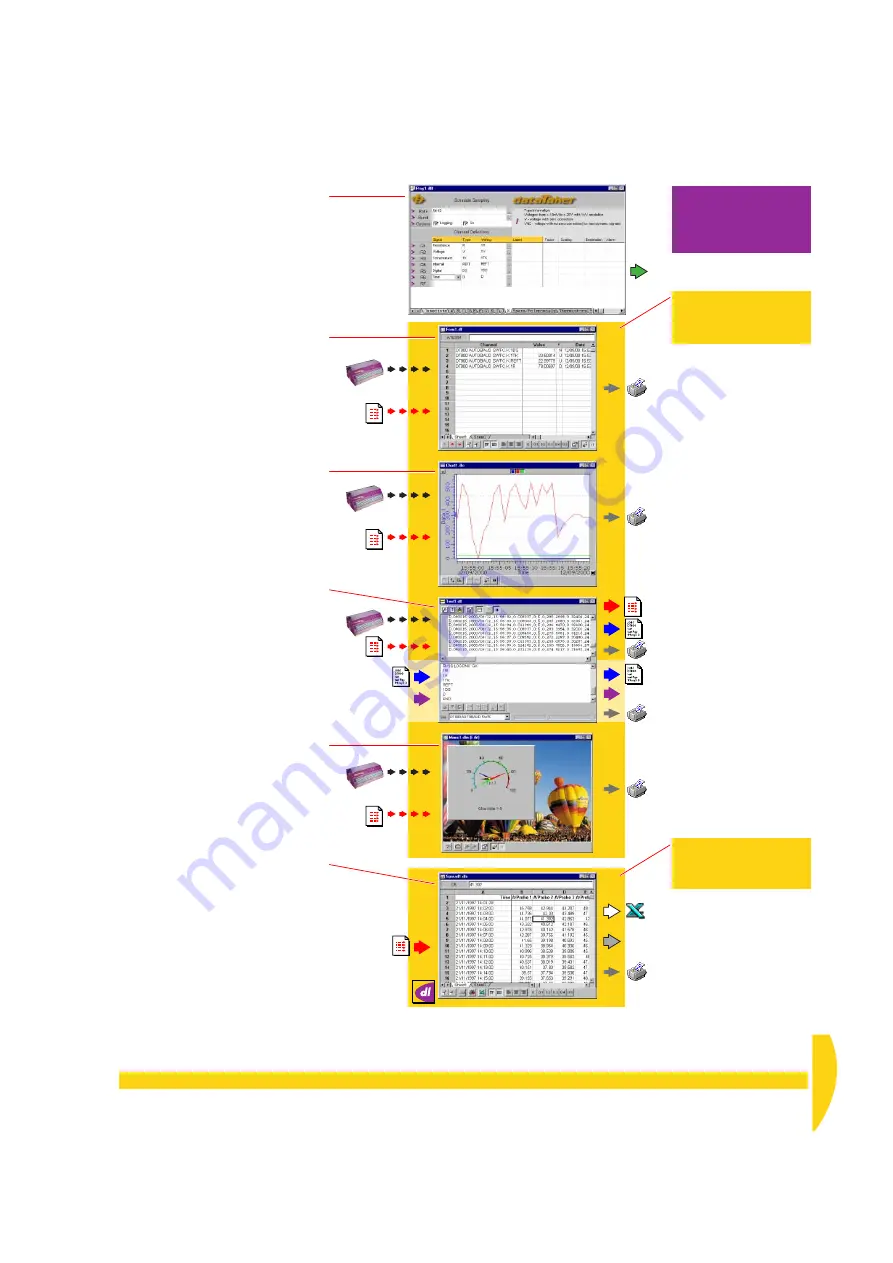
C
HAPTER
4 A Q
UICK
O
VERVIEW
OF
D
E
L
OGGER
: The Big Pictures
23
UM-0071-A0
Program builder
window — create
a program and send it to the DT800.
(Note: this is different from the
program builder used for the DT50
and the DT500/600 Series.)
Form
window — view each channel’s
latest data and other information,
one row per channel.
Static
data view — load
an entire replay file into
DeLoggger’s spreadsheet
window.
Chart
window — view live trend plots
(data versus time) like traces on a chart
recorder.
Text
window — view incoming data in
the
display screen
; type commands to
send to the DT800 in the
entry screen
(an alternative to the program builder if
you’re familiar with the DT800 native
programming language).
Mimic
window — view data on a
needle meter; add background
graphics.
Spreadsheet
window — load a
replay file one row per timestamp, one
column per channel. Then manipulate
the data, save it in a variety of formats,
or export it directly into Microsoft Excel.
Dynamic
data views —
these DeLogger windows
display incoming real-time
or replay data “live”.
Note
You can open
more than one of each of
these window types in any
DeLogger project (choose
New
from the
File
menu).
Load text file (.cmd/.dxc or .txt)
Load session from replay file
REAL-TIME
CONNECTION
REPLAY
CONNECTION
REAL-TIME
CONNECTION
REPLAY
CONNECTION
REAL-TIME
CONNECTION
REPLAY
CONNECTION
REAL-TIME
CONNECTION
REPLAY
CONNECTION
Capture data to disk as it arrives
(as a replay file .dlr)
Save screen buffer (.txt or .csv)
Save text file (.cmd/.dxc or .txt)
Load into Excel (opens Excel)
Send program to DT800
Load program builder as text
Export worksheet
Send program to DT800
F
IGURE
16
The big picture 1 — an overview of the window types available in a DeLogger project
Summary of Contents for DT800
Page 1: ...UM 0071 A0 ...
Page 2: ...UM 0071 A0 ...
Page 73: ...UM 0071 A0 ...
Page 74: ...UM 0071 A0 ...














































